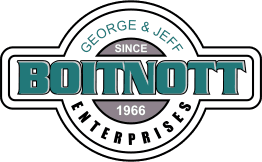HOG CONFINEMENT CLEANING
HOME / AGRICULTURAL SERVICES / HOG CONFINEMENT CLEANING
Disinfection and cleaning are vital aspects of any biosecurity program. The purpose of any such program is not to sterilize the environment completely but to instead decrease the number of pathogens available. A reduction in the pathogen load means that transmission will not be able to take place. The Boitnott Enterprises hog confinement cleaning process has several steps, which include the following:
Cleaning
Here, our team of professionals begins by doing away with all the organic materials. It is a task that is best achieved through the use of a scraper, shovel, or broom. The team will typically attempt to remove as many solid materials as possible to reduce the use of water.
Washing
In the entire process, this is the one-step that takes up much time. Nevertheless, it tends to be one of the most critical processes. If done correctly, the washing process will do away with 99.99% of all microorganisms that may be present in that environment. The team’s objective here will be to do away with any remaining organic matter (urine, manure, or feed). It is a task that is accomplished by using high-pressure washers.
Disinfection
It is one of the most critical aspects of hog confinement cleaning as it requires that the cleaners rely on science. Unless the surface is cleaned completely, it will not be possible to achieve disinfection. The Boitnott Enterprises cleaners will normally select a disinfectant based on preference, as opposed to pricing. Disinfectants employed by our team of professionals have all been approved by the EPA (environmental protection agency).
Total Drying Time
The primary challenge with many disinfection and cleaning programs lies in the amount of time that should be allowed for extended drying. The main goal of this additional drying time is to ensure that all moisture is allowed to evaporate from the surface. Ideal drying time is between 48 and 72 hours after cleaning has been completed.
